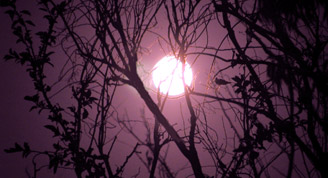The Position of Sri Madhavendra Puri
As published in The Harmonist (Sree Sajjanatoshani)
Edited by Paramahamsa Paribrajakacharyya Sri Srimad Bhakti Siddhanta Saraswati Goswami Maharaj
FEBRUARY 14, 1935
Sri Madhavendra Puri is said to be the sprout of the great tree of devotional love represented by Sri Chaitanya Dev to the world. He comes of the line of Sri Madhwa, the Acharya of the pure Dwaita (Dualistic) philosophy. It is well known to a student of religious literature that pure Dualism is one of the four Theistic Vaishnava Schools of ancient India. As Brahma, the creator himself, has been mentioned to be the pioneer of the Faith, the school is also known as 'Brahma Sampradaya'.
The line of succession of the Acharyas from Brahma to Madhwa shows variation. Some count it as Brahma, Sanakas, Durbasa, Achyutapreksha, Madhwa, while a sober section holds to the line as Brahma, Narada, Vyasa and Madhwa. Because though Sri Madhwa took his ascetic order formally from Achyutapreksha, he is found all along to be in severe opposition to the professed creed of this formal Guru both before and after the acceptance of such order. Besides, Madhwa's propaganda before he met Sri Vyasa, was clearly limited to a destructive line of vanquishing Mayavada, and it is only after he came under the Divine Feet of Vyasa Deva--the great world-teacher of Theism--that he took up the constructive side of regular preaching, and made converts and commentaries as an authorised Acharya. Achyutapreksha, his former Guru, then submitted to him and was converted fully to Transcendental Dualism from the Mayavada of Sankara. Therefore, that Sri Madhwa, as an Acharya preaching the positive principle of Transcendental Dualism comes in the line of Sri Vyasa is considered more valid and is accepted by the wiser section.
Sripad Madhavendra Puri was an Acharya of the Madhwa school and is considered to be the connecting link between Madhwa and Gaudiya Sampradaya. This is accepted both by the Madhwa as well as by the Madhwa Gaudiya-Sampradayas. The author of Sri Sri Gaur-Ganoddesa-Dipika, Sri Baladeva Vidyabhusan and others have left authentic records to that effect. But some suspicion may arise in a modern empiric mind as to how 'Puri' can possibly come of the Madhwa Sampradaya where the Sanyasins go by the general title of 'Tirtha'.
In answer to that, a section in the Madhwa community wants to say that though 'Tirtha', having its sacred association with 'Ananda Tirtha'--Madhwa himself, found special favour in the school and got prominence as a general title of the sanyasins of the community, yet 'Puri' and other titles were not absent altogether. It asserts that Madhwacharya himself as well as his successors converted many sanyasins of Sankara school and allowed the retention of their former titles to demonstrate their victories over Mayavada, and thus Madhavendra Puri must either be a disciple of such a convert or a direct convert. But as this section cannot show any authentic record, sufficient to prove their statement, we do not find any reason to accept mere assertion.
The other section, however, holds that Sripad Madhavendra Puri, as a Guru of the Doctrine of Transcendental Love, must have accepted his Diksha (Divine Initiation) from the bona fide line of Transcendental Dualism of Madhwacharya though he might have taken his sanyasa (formal ascetic order) from any other community. The section attaches the real importance to Diksha and points out the remarkable indifference with which a Vaishnava Acharya treats the formal taking of an ascetic order. This party draws our attention to Madhwacharya himself who took his sanyasa from Achyutapreksha of the Mayavada school only to refute the professing faith of the very Guru.
The fact that the Vaishnava school does not attach much importance to this external formality of ascetic order, but considers it merely as an ostentatious advantage for propaganda work, is also maintained by Sri Ramanuja's example of going through the order himself without the help of any Guru of any sect whatsoever. On the other hand the same Ramanujacharya was seen perseveringly trying for the Grace (in the form of Mantra Diksha) from a Vaishnava Guru, times without number. Later on Lord Chaitanya too, showing His anxiety for Sanyasa, took it at once from the immediate available Kesava Bharati of Sankara school after giving him necessary instructions for the same, and is seen mentioning in modest sportive expression at times this Mayavada connection which an adventurous and interested critic often misreads and very prudently gives his decree to count Him as one in the Mayavada fold.
So it is not definitely known whether Sripad Madhavendra Puri had his ascetic order from Madhwa Sampradaya. But it is sure that he was an Acharya of the very Sampradaya. It is also sure that he was not a mere convert too, from any other sect. Because his faith and love to Sri Krishna and His service was far too sublime and soaring to keep him even within the bounds of Madhwa school itself, what to speak of Mayavada theory which propounds God soul and service as all illusion. In fact Madhavendra Puri was not sadhana-siddhwa i.e. not one who had to realise his goal in this life, but nitya-siddhwa or eternally self-realised one.
Trouble, however, arises again as to the adjustment of several names in the pontifical list from Madhwa to Madhavendra Puri. Empiric enquiry, ignorant of the real nature and object of spiritual lineage, finds itself in a blind lane while meddling with matter beyond its scope, and tries to break through the walls with animal wrath. How the four direct disciples of Sri Madhwa-Padmanabha, Narahari, Madhava and Akshobhya-could come in a line of pontifical succession and how they could occupy the same seat of the principal Acharya of the same institution, each for seven, nine, seventeen and seventeen successive years respectively,-are congenial although essentially trivial problems to these pedants of intellect. Then again the history shows a very small span of time between Sri Chaitanya and Vyasaraya Swami. So how can a long list of so many Acharyas be possibly accommodated within this short period of time? A puzzle it is, indeed to a critic of foreign experience. One may hope to be excused to draw the attention of these rationalistic speculators to the list of royal succession of the present Cochin State, of course granted that they are not conversant with the special method of inheritance of that particular State, when these friends will simply become stupefied to find that even more than a dozen successive ruling princes are very often contemporaries. Therefore, the correct reading of pontifical line depends on our sound knowledge of Sampradayarahasya (Esoteric Techniques of spiritual society). And, when really blessed with such light alone, we can find that sometimes names of remarkable contemporaries are retained and sometimes names that are not very prominent are omitted from the pontifical list.
But the greatness and importance of Sri Madhavendra Puri, however, does not lie so much in his being a mere bona fide member of the Madhwa community, as in his being the pioneer of the Faith of Transcendental Love to Sri Krishna, to proclaim which the Great Lord Sri Chaitanya Deva descended on Earth. The first effective start of Madhura-rasa Upasana or Consort-service to the Youthful Krishna, was really given by Sri Madhavendra Puri. Although the services of Krishna as the Gopees rendered them in Brindavan, were not unknown in Madhwa Maths, yet the Object of their services being Bala Gopala the mode of service can naturally be only in Batsalya-rasa or Parental-affection. The famous poems of Sripad Madhavendra Goswami beginning with 'Oyi Deena Dayadra Natha etc.' 'Kamprati Kathaitumese etc.', 'Shyamameva Param Rupam etc.', not only indicate the highest achievement of the author, but prove that even men of high religious culture of the time were quite strangers to the sublime thought of deep Consort-love to Ever-Youthful Krishna, Reality-the Beautiful. There is also a hint in his poem of the Advent of a Great Apostle of an extensive and organised propaganda of this blossoming doctrine of sweet Consort-service to the Youthful and Beautiful Supreme Person- Sri Krishna, the All-love, and it is not difficult to see the meaning in the Great Lord Chaitanya Deva and His overflowing distribution of the nectarine treasure of Love-service to the Supreme Krishna.
Sri Nityananda, Sri Adwaitacharya, Sri Ishwara Puri, Sri Ranga Puri, Raghupati Upadhyaya and many other towering personalities of great religious and social importance of the time, have been mentioned to express their high reverence and spiritual indebtedness to this great saint and saviour of mankind.



